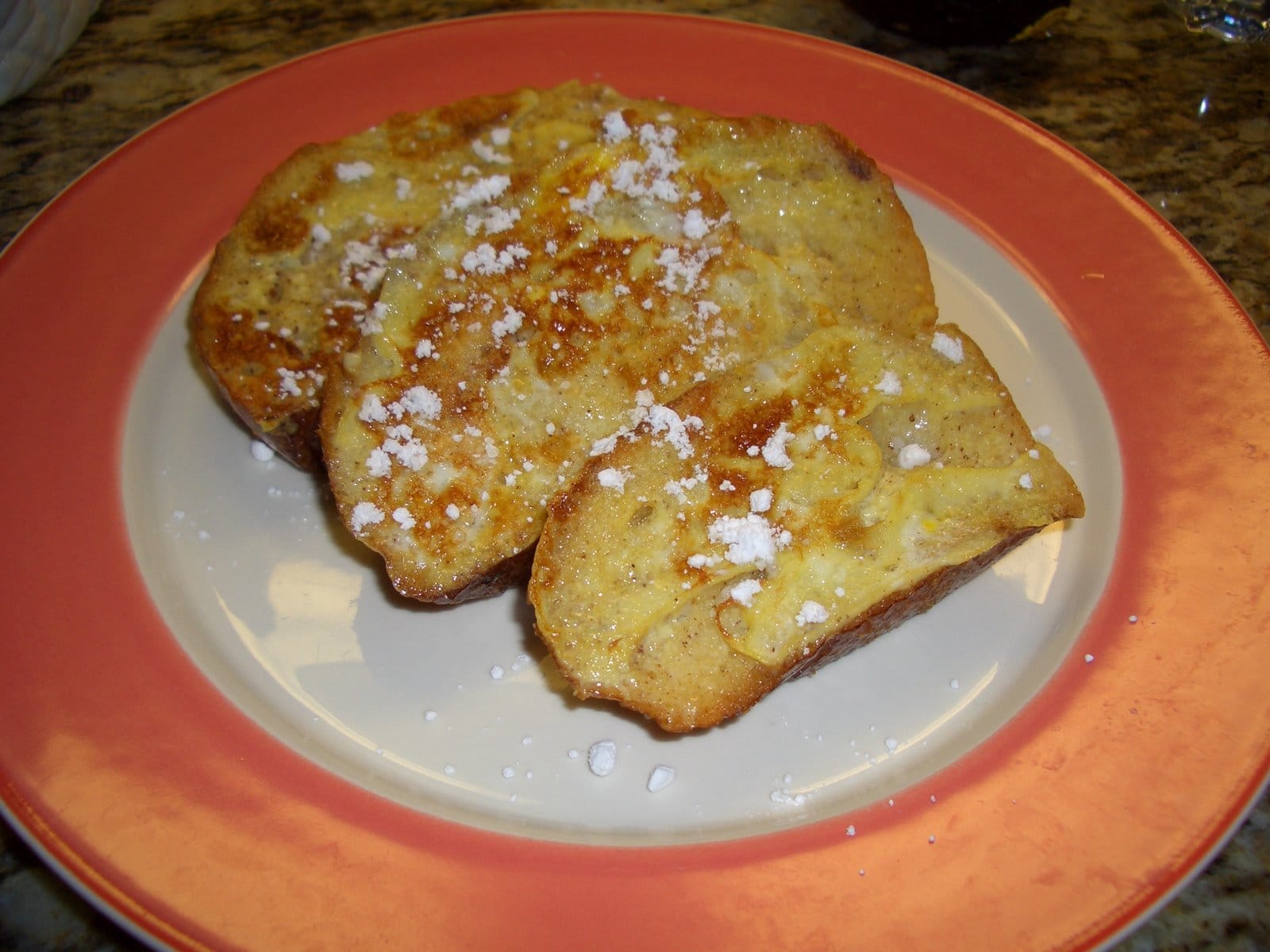
Possibly not French or even from France.
French Toast has a long history in the form of many names from various cultures. There is written evidence in cookbooks as well as the found food legend that goes with it. Read about the French toast history and how it may or may not even be French at all.
French Toast History & Timeline
The origins of French toast can be traced back to Ancient Rome with their pan dulcis, a bread soaked in milk and egg and then fried in oil and eaten with honey.
Fast forward to the 14th century, similar recipes were found throughout Europe including Germany, France, and Italy. In fact, you can find variations throughout Europe, including UK’s bread pudding, Spain’s torrija, and Portugal’s rabanadas.
A century later in the 1400s, recipe books in England wrote about pain perdu, or lost bread. Lost refers to the stale bread that was soaked in milk and eggs and then fried. If you are looking for French toast in England or France, look for “pain perdu” and not “French toast”.
The term “French toast” was found in a 1660 British cookbook titled The Accomplisht Cook in which “French” referred to the slice, such as with French-cut fries.
One of the most popular tales for the creation and naming of French toast comes from 1724 in Albany, New York. An innkeeper named Joseph French replicated pain perdu and named it after himself but left off the apostrophe, Frenchs Toast. The dish was soon popularized as French Toast. Furthering this, for Americans and other non-French cultures, naming a dish “French” perhaps made it fancier and more expensive.
Sign up for my newsletter on the sidebar for blog updates and my travel insider tips! And, check out my vlogs on YouTube!


